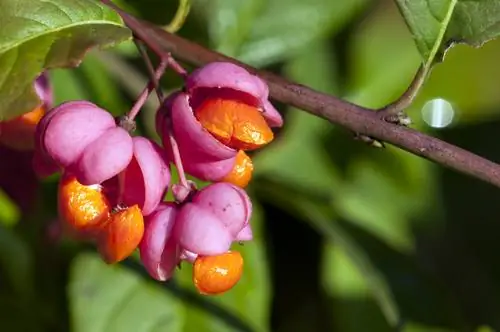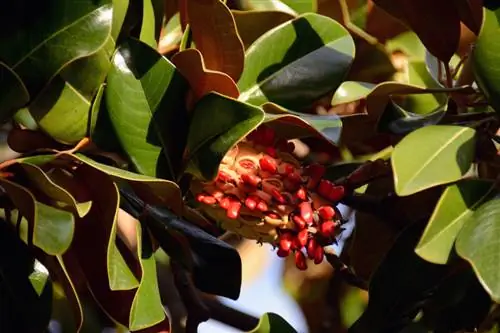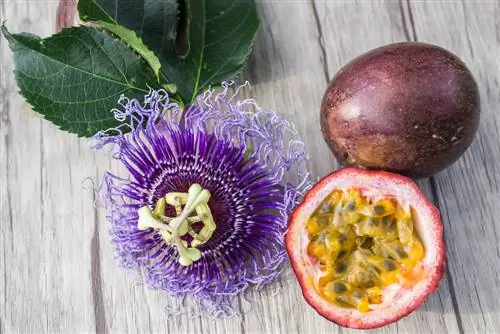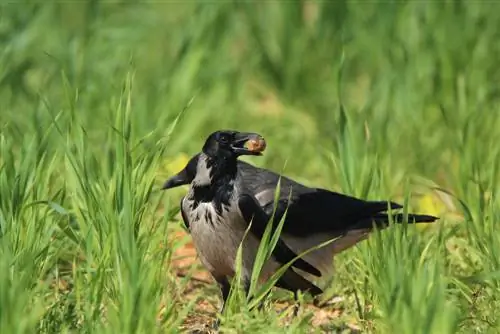- Author admin [email protected].
- Public 2023-12-16 16:46.
- Last modified 2025-01-23 11:22.
While the flower of the Pfaffenhütchen is rather inconspicuous, the fruit is a real feast for the eyes. Unfortunately it is not edible for us humans, but birds can. Find out more about the fruit of the spindle bush below.
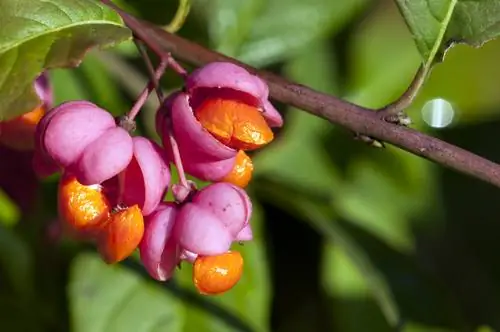
What is the Pfaffenhütchen fruit and is it edible?
The fruit of the Pfaffenhütchen is a purple-pink to carmine-red colored capsule fruit that ripens from September and serves as food for birds such as robins, thrushes and tits. However, the fruit is poisonous to humans and can cause nausea, vomiting and other symptoms.
Bloom
The inconspicuous green flowers, which sit together in loose inflorescences, appear between May and June. Usually two to six, rarely nine flowers are formed per axis. They are hermaphrodite and fourfold in structure. The flowers produce sweet-smelling nectar that attracts numerous insects. Flower visitors mainly include flies and ants. More flowers are developed on calcareous soils.
Fruit
The fruits ripen from September. They are capsule fruits with four lobes that are purple-pink to crimson in color. When their development is complete, they jump up with four flaps. In each compartment there is a seed on an elongated stalk that hangs out of the open flaps. The shrub got its German name because of its similarity to the typical headgear worn by Catholic clergy.
The strikingly colored fruits attract various birds, which ingest the seeds. They nibble off the fleshy outer shell of the seed and drop the inner part. Robins mainly eat the seeds, which is why the shrub was nicknamed robin's bread. Thrushes and titmice are also frequent visitors.
The seeds already contain greenish cotyledons. Even so, it takes three to four years before the seeds start germinating. Pfaffenhütchen reproduce vegetatively through creeping shoots that root on the ground.
Toxicity
Pfaffenhütchen are poisonous in all parts of the plant. The toxic ingredients are particularly highly concentrated in the seeds. Birds do not die from eating the fruit. With other pets, accidental snacking can quickly become fatal. The fruits and leaves are not suitable for consumption, even if they have been used medicinally in the past. The poisonous effects of the plant have been known since ancient times.
Possible symptoms:
- Nausea
- Vomiting
- Diarrhea
- rapid breathing
- increased heart rate
Usage
The Pfaffenhütchen has proven itself several times as a valuable tree for fortifying slopes, banks and embankments. The wood provides an important raw material for producing charcoal or cleaning wood for watchmakers. The shrub has a high ornamental value in gardens and parks. The native trees should not be missing in the natural garden, because they provide a valuable habitat for insects and birds.

